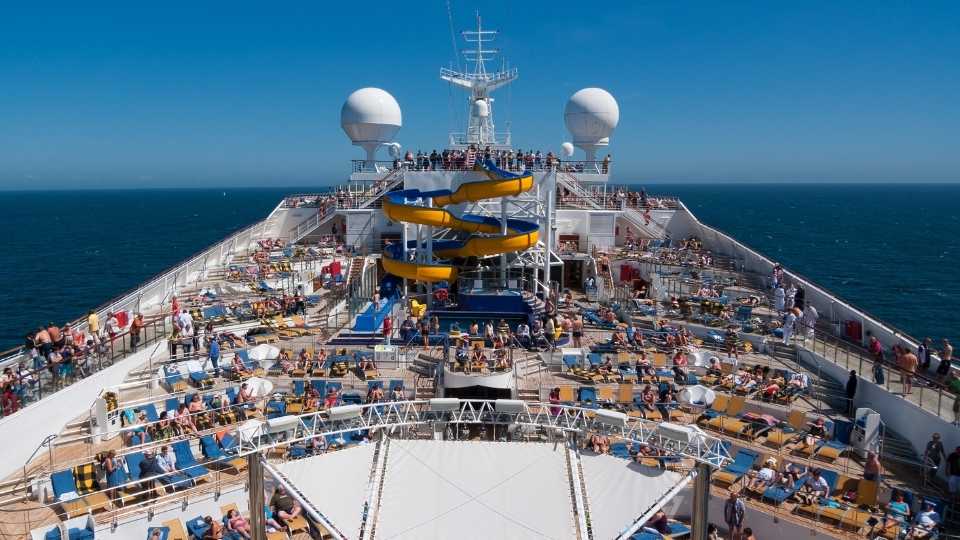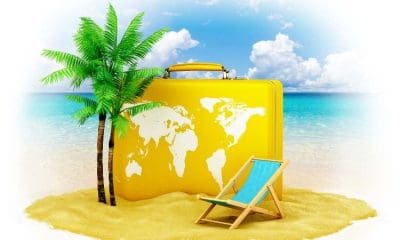Senior Travel
Exploring the Map of Asia: A Guide to Countries, Capitals, and Geographic Boundaries


Asia, the largest and most populous continent on Earth, is a land of staggering diversity and profound historical significance. Its vast territories encompass mountains that touch the sky, deserts that stretch beyond the horizon, and forests that teem with life. The Map of Asia is not just a representation of geographical locations; it’s a window into the cultures, histories, and lives of billions of people. In this comprehensive guide, we delve into the intricacies of Asia’s geography, including its countries, capitals, and boundaries, providing a panoramic view of this magnificent continent.
Understanding Asia’s Geography
At the heart of Asia’s geography is its sheer size. Covering an area of approximately 44.58 million square kilometers, it spans from the icy expanses of Siberia in the north to the sun-drenched islands of Indonesia in the south. The continent is bounded by the Arctic Ocean to the north, the Pacific Ocean to the east, the Indian Ocean to the south, and Europe and Africa to the west. This vast area includes some of the planet’s most extreme landscapes, from the world’s highest peaks in the Himalayas to the arid deserts of Arabia and the fertile river valleys of Southeast Asia.
Countries and Capitals: A Tapestry of Nations
Asia is home to 49 countries, each with its own unique identity, culture, and history. These nations range from sprawling giants like China and India, each with over a billion inhabitants, to tiny city-states like Singapore. The capitals of these countries are often bustling metropolises, such as Tokyo, Japan, the world’s most populous city, and Astana, Kazakhstan, known for its futuristic architecture. Other capitals, like Ulaanbaatar in Mongolia, offer a glimpse into a nomadic heritage juxtaposed against modern development. These cities are not just political centers but also cultural and economic hubs that reflect the diversity and dynamism of Asia.
Geographic Boundaries and Natural Wonders
The boundaries of Asia are defined by both natural and human-made features. The Ural Mountains and the Ural River delineate Asia from Europe to the west, while the Suez Canal separates Asia from Africa. To the east, the vast expanse of the Pacific Ocean marks the continent’s boundary. Within these borders lie some of the most breathtaking natural wonders of the world. The Map of Asia highlights features such as the Gobi Desert, the largest desert in Asia; the Yangtze River, the longest river in the continent; and Mount Everest, the highest point on Earth. These geographical landmarks are not just tourist destinations but also crucial to the ecosystems and livelihoods of the region.
Exploring the Continent: A Journey Through Asia
A journey through Asia is an exploration of contrasts. In the north, Siberia offers some of the most extreme weather conditions on the planet, with vast taigas and permafrost landscapes. Moving south, the steppes of Central Asia transition into the dense forests and high mountains of China and Nepal. Southeast Asia is characterized by its tropical climate, with lush rainforests and extensive river systems. The Middle East, or West Asia, is known for its arid deserts and the fertile crescent, the birthplace of some of the world’s earliest civilizations.
Political Boundaries and International Relations
The Map of Asia also reflects the complex political landscape of the continent. Asia is a mosaic of countries with a wide range of political systems, from democracies to monarchies and authoritarian regimes. The boundaries between these countries have often been the subject of historical disputes and conflicts, but they also represent opportunities for cooperation and dialogue. Initiatives like the Association of Southeast Asian Nations (ASEAN) and the Shanghai Cooperation Organization (SCO) aim to foster economic and security collaboration among member states, highlighting the importance of diplomacy and mutual understanding in the region.
Conclusion
Asia, with its vast landscapes, diverse cultures, and complex history, is a continent that defies simple description. The Map of Asia serves as a guide to understanding not only the geographical but also the political, cultural, and economic landscapes of this vast region. From the frozen tundras of Siberia to the tropical islands of Southeast Asia, the continent offers an endless array of experiences and discoveries. As we continue to explore and understand Asia, we uncover more about the world we share and the intricate tapestry of human civilization.



Hello there! I’m Gabriel Holmes, a 41-year-old travel enthusiast with a degree in Marketing from the Indiana University Northwest. I’m the voice behind TopWorldTravels.com, where I channel my passion for exploration into engaging travel narratives and invaluable tips.
My journey into the world of travel is a personal odyssey, fueled by a desire to uncover the beauty and diversity our planet has to offer. Over the years, I’ve wandered through countless destinations, immersing myself in various cultures and capturing the essence of each experience through my writing. From the bustling streets of metropolitan cities to the serene landscapes off the beaten path, I’ve made it my mission to share the gems I discover along the way.
Armed with my marketing background from IUN, I approach travel with a strategic and analytical mindset. This expertise allows me to curate content on TopWorldTravels.com that resonates with a diverse audience. Whether you’re a budget backpacker or a luxury traveler, my goal is to provide insights that cater to all tastes and preferences.
Beyond the typical tourist spots, I’m committed to uncovering the authentic heart of each destination. My writings not only offer practical advice on packing and navigating unfamiliar terrains but also emphasize the importance of responsible tourism. I believe in leaving a positive impact on the places I visit, promoting sustainable practices that preserve the environment and support local communities.
Join me on my virtual expeditions at TopWorldTravels.com, where my words weave a tapestry of discovery, wanderlust, and cultural appreciation. Travel, for me, is more than a leisure activity; it’s a transformative journey that enriches the soul and broadens horizons. Let TopWorldTravels.com be your compass to a world of unforgettable experiences, as we embark on this vicarious adventure together.
Senior Travel
Exploring the Bizarre: Unraveling the Mysteries of Cryptids, Anomalies, and the Paranormal


The world is a vast and mysterious place, brimming with phenomena that defy explanation and creatures that elude scientific classification. From the shadowy depths of the oceans to the remote expanses of wilderness, stories of weird things in the world have captivated the human imagination for centuries. In this article, we delve into the enigmatic realm of cryptids, anomalies, the paranormal, and the unexplained—offering a glimpse into the bizarre mysteries that continue to perplex and fascinate us.
The Enigma of Cryptids
Cryptids are creatures rumored to exist based on anecdotal evidence, but whose existence is not supported by scientific proof. These elusive beings, ranging from the Loch Ness Monster to Bigfoot, have been the subject of folklore and speculation across cultures. The search for cryptids is not merely a quest for new species; it’s an exploration into the unknown corners of our planet and the limits of human knowledge. The fascination with cryptids lies not only in their mystery but also in the possibility that our world still harbors undiscovered wonders.
Unraveling Anomalies
Anomalies are occurrences or objects that deviate from what is standard, normal, or expected. These can range from unexplained natural phenomena to artifacts that challenge our understanding of history. For instance, the Bermuda Triangle, an area in the North Atlantic Ocean, has become synonymous with mysterious disappearances of ships and airplanes. Similarly, the ancient Nazca Lines in Peru, massive geoglyphs etched into the desert, have puzzled researchers for decades. Anomalies such as these compel us to question our assumptions and push the boundaries of our scientific inquiries.
The Paranormal and Beyond
The paranormal encompasses a wide array of phenomena that lie beyond the scope of normal scientific understanding. Ghosts, spirits, and hauntings fall under this category, stirring both fear and fascination. The allure of the paranormal is not merely in the thrill of the unknown but in the profound questions it raises about existence, consciousness, and the afterlife. Investigations into paranormal activity often intersect with the fields of psychology and physics, challenging us to expand our perspectives and consider new dimensions of reality.
Bizarre Mysteries of the Unexplained
Beyond cryptids, anomalies, and paranormal phenomena, there are mysteries that defy all categories. These include the unexplained sounds heard around the world, such as the eerie “hum” reported in various locations, and the baffling disappearance of civilizations, such as the Maya. These mysteries serve as humbling reminders of the limits of human understanding and the vastness of the unknown.
Conclusion
The exploration of weird things in the world—cryptids, anomalies, paranormal phenomena, and unexplained mysteries—invites us to question our perceptions and explore the boundaries of the known. It is a journey that not only satisfies our curiosity but also enriches our sense of wonder. In a world that often seems fully mapped and understood, these mysteries remind us that there are still territories of knowledge left to chart and that the search for understanding is an endless adventure.
As we continue to probe these enigmas, we may find that the answers lead us to more questions, and the mysteries deepen rather than resolve. But it is in this pursuit of the unknown that we truly engage with the mystery and majesty of our world. Whether we ever find definitive answers to these puzzles is less important than the journey itself—the quest for knowledge and the exploration of the vast, uncharted realms of the bizarre.



Hello there! I’m Gabriel Holmes, a 41-year-old travel enthusiast with a degree in Marketing from the Indiana University Northwest. I’m the voice behind TopWorldTravels.com, where I channel my passion for exploration into engaging travel narratives and invaluable tips.
My journey into the world of travel is a personal odyssey, fueled by a desire to uncover the beauty and diversity our planet has to offer. Over the years, I’ve wandered through countless destinations, immersing myself in various cultures and capturing the essence of each experience through my writing. From the bustling streets of metropolitan cities to the serene landscapes off the beaten path, I’ve made it my mission to share the gems I discover along the way.
Armed with my marketing background from IUN, I approach travel with a strategic and analytical mindset. This expertise allows me to curate content on TopWorldTravels.com that resonates with a diverse audience. Whether you’re a budget backpacker or a luxury traveler, my goal is to provide insights that cater to all tastes and preferences.
Beyond the typical tourist spots, I’m committed to uncovering the authentic heart of each destination. My writings not only offer practical advice on packing and navigating unfamiliar terrains but also emphasize the importance of responsible tourism. I believe in leaving a positive impact on the places I visit, promoting sustainable practices that preserve the environment and support local communities.
Join me on my virtual expeditions at TopWorldTravels.com, where my words weave a tapestry of discovery, wanderlust, and cultural appreciation. Travel, for me, is more than a leisure activity; it’s a transformative journey that enriches the soul and broadens horizons. Let TopWorldTravels.com be your compass to a world of unforgettable experiences, as we embark on this vicarious adventure together.
Senior Travel
Discover the Best All-Inclusive Food and Drink Resorts in the USA: Unlimited Dining, Luxury Stays, and More!


When planning a vacation, the allure of all-inclusive resorts is undeniable. The convenience of having your accommodations, dining, and entertainment all wrapped into one package can transform a good vacation into an unforgettable one. In the United States, a country renowned for its diverse landscapes and hospitality, all-inclusive food and drink resorts offer a unique experience that combines luxury, comfort, and culinary excellence. This article takes you through an exclusive selection of the best all-inclusive food and drink resorts in the USA, focusing on unlimited dining, beverage packages, luxury accommodations, resort credits, beachfront properties, and entertainment options.
Unlimited Dining: A Culinary Journey
At the heart of any all-inclusive resort experience is the dining. Unlimited dining options mean you can indulge in a variety of cuisines from around the world without leaving the comfort of your resort. From gourmet meals prepared by renowned chefs to hearty buffets that cater to every palate, these resorts ensure that your culinary journey is as rich and varied as the destinations themselves. Whether you’re craving Italian, Mexican, Asian, or traditional American cuisine, the all-inclusive resorts across the USA are ready to satisfy your every craving, at any time of the day or night.
Beverage Packages: Cheers to Unlimited Refreshment
What’s a vacation without a toast to the good times? All-inclusive resorts in the USA understand this well and offer extensive beverage packages that include everything from soft drinks and premium coffees to top-shelf spirits and exotic cocktails. Whether you’re lounging by the pool, enjoying a meal, or simply taking in the sunset, a refreshing drink is never out of reach. These beverage packages are designed to cater to all preferences, ensuring that guests can enjoy their favorite drinks without worrying about the bill.
Luxury Accommodations: Your Home Away From Home
After a day filled with activities and indulgence, a comfortable and luxurious accommodation awaits to provide you with the rest and relaxation you deserve. These resorts offer a range of options, from spacious rooms with breathtaking views to private villas that offer seclusion and tranquility. Equipped with modern amenities and designed with elegance, these accommodations ensure that your stay is as comfortable as it is memorable. Whether you’re on a romantic getaway or a family vacation, you’ll find a space that perfectly suits your needs and enhances your vacation experience.
Resort Credits: Elevating Your Experience
To make your stay even more enjoyable, many all-inclusive resorts in the USA offer resort credits that guests can use towards a variety of experiences and services. These credits can be used for spa treatments, exclusive dining experiences, golfing, water sports, and much more. It’s a fantastic way to enhance your vacation and indulge in activities that you might not have considered otherwise. With these resort credits, you have the freedom to customize your stay and make the most of every moment.
Beachfront Properties: A Gateway to Paradise
For those who dream of waking up to the sound of waves and the sight of pristine beaches, the USA boasts some of the most beautiful beachfront all-inclusive resorts. These properties offer direct access to the beach, allowing guests to enjoy the sun, sand, and sea with unparalleled ease. From the stunning shores of Florida and Hawaii to the picturesque coasts of California, these beachfront resorts provide a serene and beautiful backdrop for your vacation. Whether you’re looking to relax on the beach, try your hand at water sports, or simply enjoy the view, these resorts offer a slice of paradise.
Entertainment Options: Fun for All Ages
A great vacation is about more than just good food and a comfortable bed; it’s about the experiences and memories you create. All-inclusive resorts in the USA offer a wide range of entertainment options for guests of all ages. From live shows and music performances to themed parties, water parks, and kids’ clubs, there’s something for everyone. These resorts are designed to keep you entertained throughout your stay, ensuring that there’s never a dull moment.
In conclusion, all-inclusive food and drink resorts in the USA offer an unparalleled vacation experience that combines the convenience of all-inclusive packages with the luxury and diversity of the American hospitality industry. With unlimited dining, extensive beverage packages, luxury accommodations, resort credits, beachfront properties, and endless entertainment options, these resorts are the perfect choice for travelers seeking a hassle-free and indulgent vacation. So, pack your bags and get ready to embark on a journey that promises relaxation, indulgence, and unforgettable memories.



Hello there! I’m Gabriel Holmes, a 41-year-old travel enthusiast with a degree in Marketing from the Indiana University Northwest. I’m the voice behind TopWorldTravels.com, where I channel my passion for exploration into engaging travel narratives and invaluable tips.
My journey into the world of travel is a personal odyssey, fueled by a desire to uncover the beauty and diversity our planet has to offer. Over the years, I’ve wandered through countless destinations, immersing myself in various cultures and capturing the essence of each experience through my writing. From the bustling streets of metropolitan cities to the serene landscapes off the beaten path, I’ve made it my mission to share the gems I discover along the way.
Armed with my marketing background from IUN, I approach travel with a strategic and analytical mindset. This expertise allows me to curate content on TopWorldTravels.com that resonates with a diverse audience. Whether you’re a budget backpacker or a luxury traveler, my goal is to provide insights that cater to all tastes and preferences.
Beyond the typical tourist spots, I’m committed to uncovering the authentic heart of each destination. My writings not only offer practical advice on packing and navigating unfamiliar terrains but also emphasize the importance of responsible tourism. I believe in leaving a positive impact on the places I visit, promoting sustainable practices that preserve the environment and support local communities.
Join me on my virtual expeditions at TopWorldTravels.com, where my words weave a tapestry of discovery, wanderlust, and cultural appreciation. Travel, for me, is more than a leisure activity; it’s a transformative journey that enriches the soul and broadens horizons. Let TopWorldTravels.com be your compass to a world of unforgettable experiences, as we embark on this vicarious adventure together.
Senior Travel
Discover the Best 5 Day 4 Night Vacation Packages: Unbeatable Deals on All-Inclusive Resorts and Getaways


When planning a short escape from the hustle and bustle of daily life, finding the perfect vacation package can make all the difference. 5 day 4 night vacation packages offer the ideal balance between a refreshing break and making the most of your time away. In this comprehensive guide, we delve into the best travel deals, highlighting all-inclusive resorts, getaway specials, flight accommodations, excursion offers, and holiday bundles that promise an unforgettable experience.
Your Guide to 5 Day 4 Night Vacation Packages
A well-planned vacation package can transform a simple trip into an extraordinary adventure. Whether you’re dreaming of a tropical paradise, a cultural expedition, or a serene retreat, the right package can cater to your every need, ensuring a seamless and stress-free experience.
All-Inclusive Resorts: The Ultimate Relaxation Getaway
All-inclusive resorts are synonymous with luxury, convenience, and relaxation. These resorts take care of every detail, from sumptuous meals and drinks to entertainment and activities, allowing you to unwind and indulge without a worry in the world. Opting for an all-inclusive 5 day 4 night package means you can enjoy the resort’s amenities to the fullest, with the added benefit of knowing the total cost of your trip upfront.
Travel Deals and Getaway Specials: Maximizing Your Vacation
Savvy travelers know the value of hunting for the best travel deals and getaway specials. These offers can significantly reduce the cost of your trip, making luxurious destinations and experiences more accessible. Seasonal promotions, last-minute deals, and exclusive packages are just a few ways to enjoy premium vacation experiences without breaking the bank.
Flight Accommodations: Smooth Sailing to Your Destination
A crucial component of any vacation package is the flight accommodation. Ensuring comfortable and convenient air travel is essential, especially for shorter trips. Many vacation packages include flexible flight options, allowing you to choose the most suitable times and routes. This flexibility ensures that your travel experience is as smooth and enjoyable as possible, maximizing your time at your chosen destination.
Excursion Offers: Enhancing Your Travel Experience
Excursion offers are a fantastic way to explore and engage with your destination. From guided tours and adventure sports to cultural experiences and leisure activities, excursions add depth and excitement to your vacation. Many 5 day 4 night packages include a selection of excursions, giving you the opportunity to tailor your trip to your interests and make unforgettable memories.
Holiday Bundles: A Complete Vacation Solution
For those seeking a comprehensive travel solution, holiday bundles are an excellent choice. These packages typically combine accommodation, flights, excursions, and sometimes even dining and entertainment options. Holiday bundles take the guesswork out of planning, ensuring that every aspect of your trip is harmoniously coordinated for the ultimate vacation experience.
Choosing the Right Package for Your Needs
Selecting the perfect 5 day 4 night vacation package requires careful consideration of your preferences, budget, and travel goals. Here are a few tips to help you make the best choice:
– Research thoroughly: Spend time exploring different packages, reading reviews, and comparing prices to find the best deal that matches your expectations.
– Consider the location: Choose a destination that offers the activities and atmosphere you’re looking for, whether it’s relaxation, adventure, culture, or a mix of everything.
– Check what’s included: Understand exactly what your package includes to avoid any surprises. Pay special attention to meal plans, excursion options, and any additional fees.
– Look for flexibility: Opt for packages that offer some degree of flexibility, especially concerning travel dates and excursion choices. This will allow you to customize your experience to your liking.
Conclusion
With the right 5 day 4 night vacation package, you can enjoy a hassle-free and enriching travel experience that leaves you with lasting memories. By focusing on all-inclusive resorts, seeking out the best travel deals, ensuring comfortable flight accommodations, taking advantage of excursion offers, and considering holiday bundles, you can craft the perfect getaway that aligns with your desires and budget. Start planning your dream vacation today, and get ready to embark on an unforgettable journey.



Hello there! I’m Gabriel Holmes, a 41-year-old travel enthusiast with a degree in Marketing from the Indiana University Northwest. I’m the voice behind TopWorldTravels.com, where I channel my passion for exploration into engaging travel narratives and invaluable tips.
My journey into the world of travel is a personal odyssey, fueled by a desire to uncover the beauty and diversity our planet has to offer. Over the years, I’ve wandered through countless destinations, immersing myself in various cultures and capturing the essence of each experience through my writing. From the bustling streets of metropolitan cities to the serene landscapes off the beaten path, I’ve made it my mission to share the gems I discover along the way.
Armed with my marketing background from IUN, I approach travel with a strategic and analytical mindset. This expertise allows me to curate content on TopWorldTravels.com that resonates with a diverse audience. Whether you’re a budget backpacker or a luxury traveler, my goal is to provide insights that cater to all tastes and preferences.
Beyond the typical tourist spots, I’m committed to uncovering the authentic heart of each destination. My writings not only offer practical advice on packing and navigating unfamiliar terrains but also emphasize the importance of responsible tourism. I believe in leaving a positive impact on the places I visit, promoting sustainable practices that preserve the environment and support local communities.
Join me on my virtual expeditions at TopWorldTravels.com, where my words weave a tapestry of discovery, wanderlust, and cultural appreciation. Travel, for me, is more than a leisure activity; it’s a transformative journey that enriches the soul and broadens horizons. Let TopWorldTravels.com be your compass to a world of unforgettable experiences, as we embark on this vicarious adventure together.
-



 Traveling Solo7 months ago
Traveling Solo7 months agoAdventures Through the Lens: a Solo Traveler’s Photography Guide
-



 ExPat Destinations7 months ago
ExPat Destinations7 months agoFrom Foreigner to Local: Cultural Adaptation Explained for Expats
-



 Traveling Solo6 months ago
Traveling Solo6 months agoSolo Travel: Mastering the Art of Getting Around
-



 Traveling Solo6 months ago
Traveling Solo6 months agoThe Exciting Chronicles of Solo Travel Experiences
-



 ExPat Destinations9 months ago
ExPat Destinations9 months agoBuilding Connections: the Importance of Expat Communities
-



 Senior Travel9 months ago
Senior Travel9 months agoVoyage Through Majestic Canadian Waters
-



 Traveling Solo8 months ago
Traveling Solo8 months agoUnpack the Perfect Journey: Mastering Your Packing Essentials
-



 ExPat Destinations7 months ago
ExPat Destinations7 months agoMaking It Official: Understanding Visa and Residency for Expats





